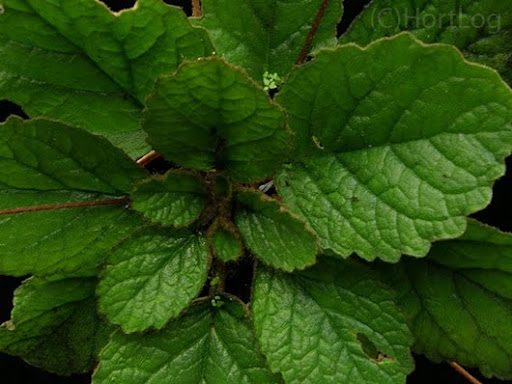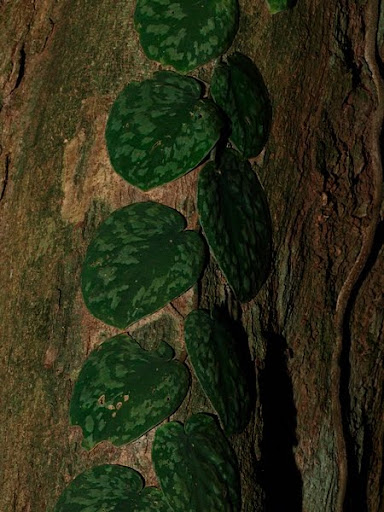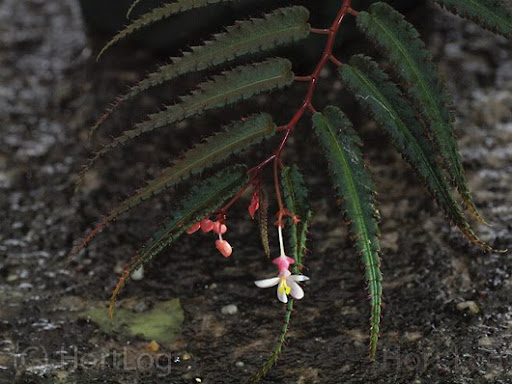Saw this grim heading from AFP citing recent studies from Kew.
Stephen Hopper, director of the Royal Botanic Gardens in Kew was quoted as saying "This study confirms what we already suspected, that plants are under threat and the main cause is human-induced habitat loss"
....well , not new, but perhaps now they can put a number to it ....
Especially threatened is the habitat of tropical forest, which has been converted to agricultural land. Human activity accounted for 81 percent of threats, according to Kew researcher Neil Brummitt.
Here's another snippet :
Plants were more threatened than birds, as threatened as mammals and less threatened than amphibians or corals, it said. Gymnosperms, the plant group including fir trees, were the most threatened.
Well....ok....so what can we do about it ?
Rather then just leaving it to a handful of institutions, I suppose if each serious gardener can adopt just one or two species - propagate them well and send them off to interested parties all over the world, then this could lighten the load. But unfortunately, things are not so simple - even if there are gardeners with inclination and expertise, we still have to overcome regional politics, CITES, customs and security red tapes and the like ....
....enough muttering, back to the garden.
You can see full reports all over the web, but here's one from yahoo
Addenda:
In response to rohrerbot's comment, I did a rough calculation - we can actually pack everyone in the world into a land mass the size of Sweden if we can accept living conditions equivalent to people from the Korean capital of Seoul (hey, I am not talking about Mumbai here), and leave the rest of our planet to the wildlife and plants. Its a rough guide but it just goes to show how much can be improved upon if there is a will.
Basis of my calculations :
world population of 6871600000
Population density of Seoul 167000
Sweden land mass 450 000 sq/km
Wednesday, September 29, 2010
Extinction threat to one fifth of world's plants
Sunday, September 26, 2010
Unusual resurrection plant
This interesting Gesneriad was found growing on bare limestone hills of S Thailand. You can see that in nature, the dead leaves are left wrapped at the base of the plant. On several occasions when I failed to water the plant, the leaves withered totally to the brown colour of the dried leaves seen above. Upon dunking it in water several times, the plant miraculously revived - with the same brown leaves turning green once more.
On several occasions when I failed to water the plant, the leaves withered totally to the brown colour of the dried leaves seen above. Upon dunking it in water several times, the plant miraculously revived - with the same brown leaves turning green once more.  The plant produced multiple branching inflorescence once or twice a year
The plant produced multiple branching inflorescence once or twice a year the bloom appeared to be typically Paraboea but it has yet to set seed naturally so far, which would verify its standing.
the bloom appeared to be typically Paraboea but it has yet to set seed naturally so far, which would verify its standing.
 The leaves are hirsute on both sides, with brown hairs at the leaf edges, venations and petioles.
The leaves are hirsute on both sides, with brown hairs at the leaf edges, venations and petioles.
I am guessing its some kind of Paraboea but its specific name remain to be identified. Any suggestions are much welcome.
Saturday, September 11, 2010
Colugo revisited
Probably sensing I was not having the best of luck, afterall its a dark drizzly afternnoon in Bukit Timah Hill, a jogger came over and asked if I would be keen to shoot a colugo. Without waiting for my answer, he pointed to a tall tree about 20 metres away where about 10 metres or so above the ground was the silhouette of a suspicious looking lump.
Quietly, I moved closer, took aim, held my breath and fired away ....


 This one kept to its daytime posture of trying to look like a cancerous outgrowth from the tree. I made funny sounds to try to make it turn its head towards me so that I could get a decent portrait to shows its friends but it just would not budge.... but you can see some flaps of skin under its armpit if you look hard enough.
This one kept to its daytime posture of trying to look like a cancerous outgrowth from the tree. I made funny sounds to try to make it turn its head towards me so that I could get a decent portrait to shows its friends but it just would not budge.... but you can see some flaps of skin under its armpit if you look hard enough.
Anyway, its a nice feeling, like seeing an old friend.
See also my nightime encouter a few months back.
Friday, September 10, 2010
Juvenile crawler


Friday, September 3, 2010
Fern-like Begonias
Some Asian Begonias have the unbearable likeness of being a fern - a case of parallel evolution perhaps. There are a few advantages I can think of. The water run-off will be more efficient and leaves will not rot as easily - a commonly encountered problem with jungle Begonias. Also, the broken leaf shape may deter a female butterfly, for example, from depositing eggs there, thinking it had already been already been visited by a compatriot.
Here are 3 species I can think of that would fit this bill :

 Originally collected from an island of Polillo in the Phillippines a decade or so ago, Begonia polilloensis is characterised by its compound, bristly leaves that looked like a Selaginella and an inflorescence with many pink male flowers and a solitary female flower. It is surprisingly robust and cuttings are easy to strike. It can also withstand relatively drier apartment home culture conditions although it will definitely prefer a terrarium-like environment.
Originally collected from an island of Polillo in the Phillippines a decade or so ago, Begonia polilloensis is characterised by its compound, bristly leaves that looked like a Selaginella and an inflorescence with many pink male flowers and a solitary female flower. It is surprisingly robust and cuttings are easy to strike. It can also withstand relatively drier apartment home culture conditions although it will definitely prefer a terrarium-like environment.
2)
Begonia bipinnatifida has the very finely divided leaves that looks like filmy ferns. This native of Papua New Guinea has been known for almost a century but is not common in collections - I myself found it to be very challenging to grow. Like the previous species, this is another member of the bulky Petermannia Section which is a predominantly East Asian. I have seen very handsome shrubs in botanical institutions in the west (see below) ....  .... but have yet so grasp the trick to make it grow well.
.... but have yet so grasp the trick to make it grow well.
3)
 The third species is a novel un-named plant found on wet granite slopes in Southern Thailand.
The third species is a novel un-named plant found on wet granite slopes in Southern Thailand. This plant really look like the Pteris fern and any casual observer would have dismissed it as such - unless it is caught flowering of course. I was told local Thais would eat this like a vegetable.
This plant really look like the Pteris fern and any casual observer would have dismissed it as such - unless it is caught flowering of course. I was told local Thais would eat this like a vegetable.
Addenda:
This species is recently named Begonia pteridiformis
Thai For. Bull. (Bot.) 38: 37–41. 2010.
